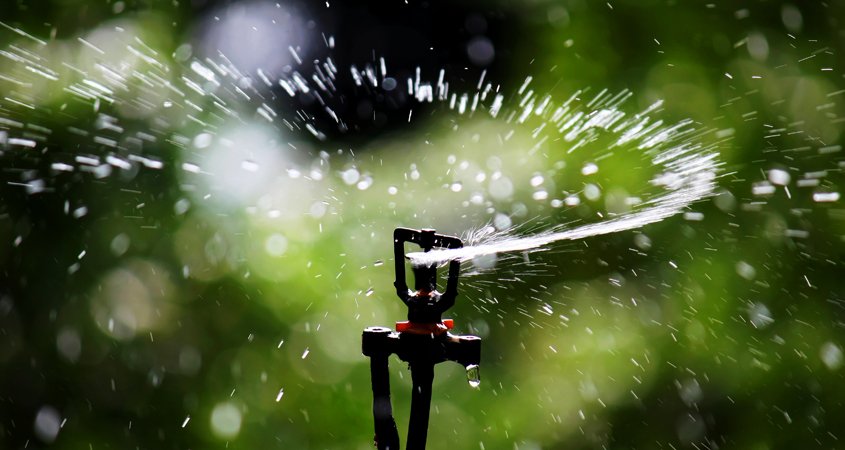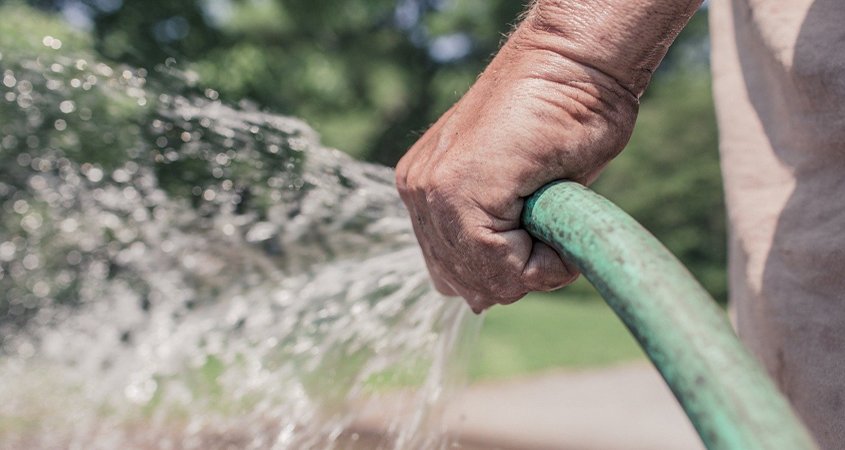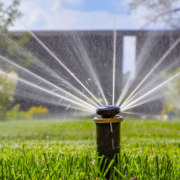During drought, it’s more important than ever to conserve water used for irrigation. When you follow just a few smart landscaping irrigation tips, you can get the most from every drop of water applied to your landscaping.
Don’t overspray your landscaping

Don’t allow your sprinklers to overspray your landscaping and waste water. Photo: Wikimedia
Watch your irrigation while the system is running. Check to make sure sprinkler heads aren’t spraying water onto sidewalks, patios, or structures.
If water is being applied too fast for your soil to absorb, runoff will occur. This needs to be prevented.
Puddling and pooling water may be an indication your water is being applied too fast or too often. Adjust your system until this isn’t happening anymore.
Repairs to broken pipes and sprinkler heads should be made immediately, or your system should be turned off until those repairs can be made.
Eliminate runoff with cycle and soak programming
Watch how quickly runoff happens when running irrigation. This is the maximum run time for your irrigation controller in a particular hydrozone.
Divide the total irrigation minutes recommended for the specific hydrozone condition into shorter blocks of time before runoff starts. For example, if you should irrigate for 15 minutes but runoff starts within five minutes, irrigate in three five-minute cycles. Allow a 30-minute rest period in between irrigation cycles.
Hand watering that works

Hand watering can be an effective method to water your landscaping. Photo: Ryan McGuire / Pixabay
Hand watering is especially good when your garden is getting established. You can spend more time watching your plants to be sure they are flourishing in the early stages.
When your landscape plants are new, you may need to water more frequently because roots are shallower. Roots on a newly planted one-gallon plant are only four to ten inches deep. This is why it’s a smart idea to plant during the rainy season.
Before hand watering, look at your plants. Do they appear droopy? Is the soil very dry? If so, give the plants a good drink. Don’t water more than two days in a row. Let the soil dry out completely before watering again. Overwatering and underwater symptoms can be similar.
Once your plants are established after the first year, your sustainable garden will not need watering more than once or twice a month – if at all. Stop watering after the first seasonal rains begin and let nature take over.
This article is part of a year-long series inspired by the 71-page Sustainable Landscapes Program guidebook. The Water Authority and its partners also offer other great resources for landscaping upgrades, including free WaterSmart classes at WaterSmartSD.org.






